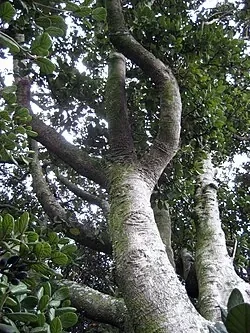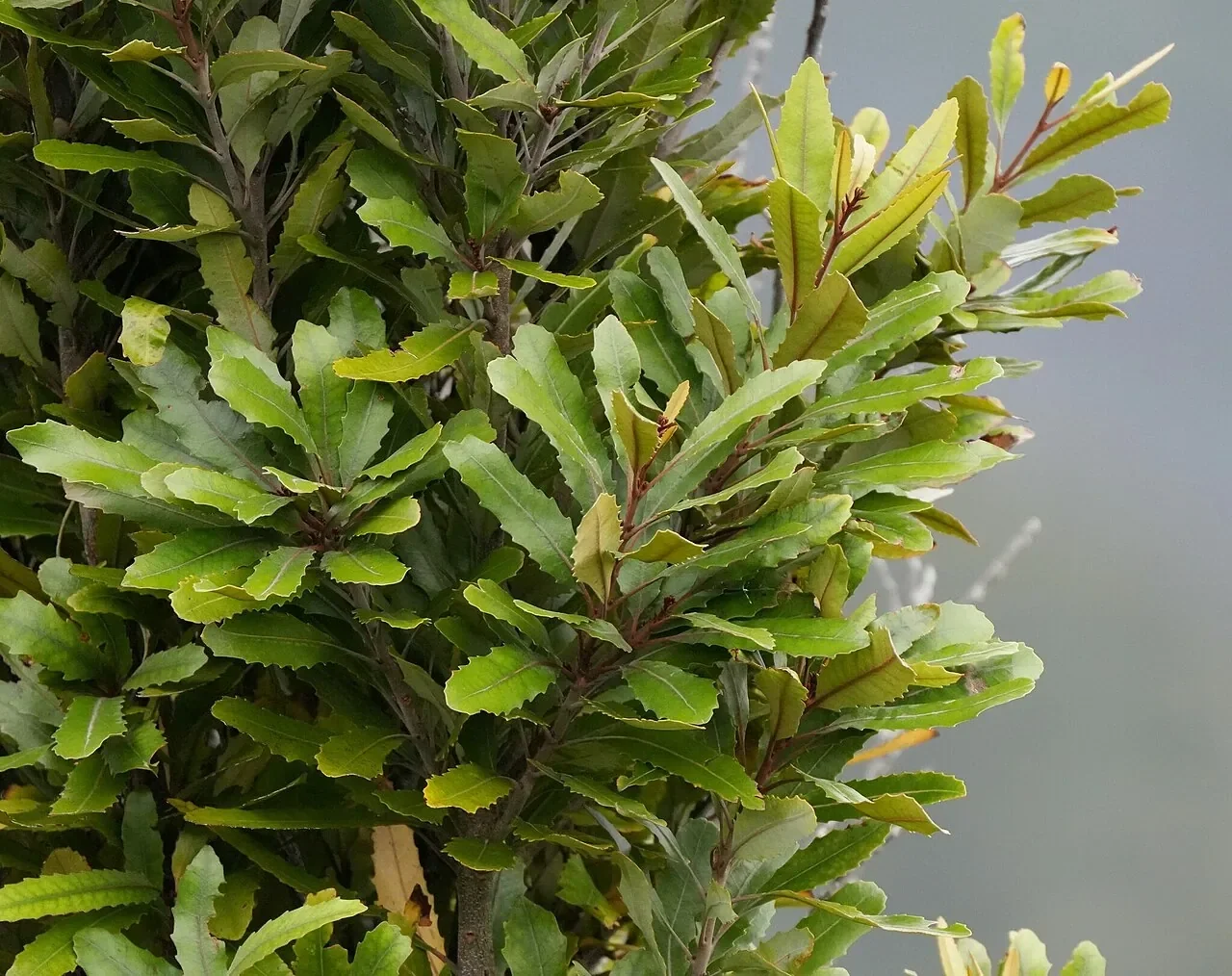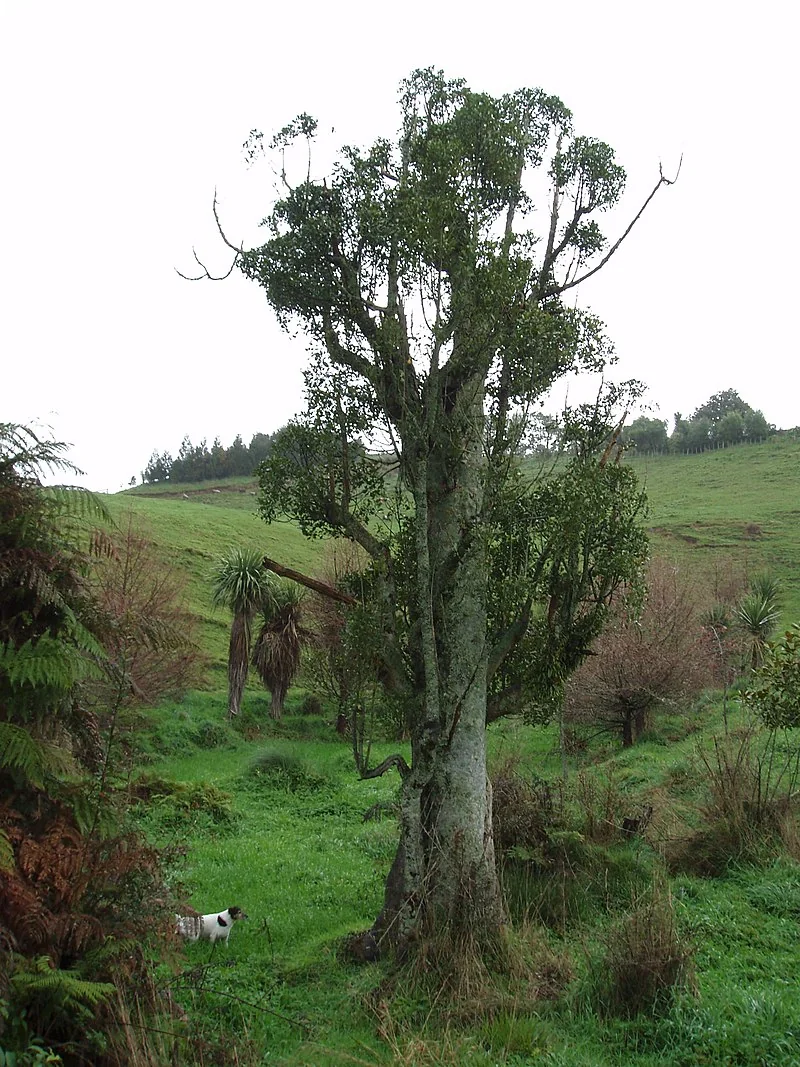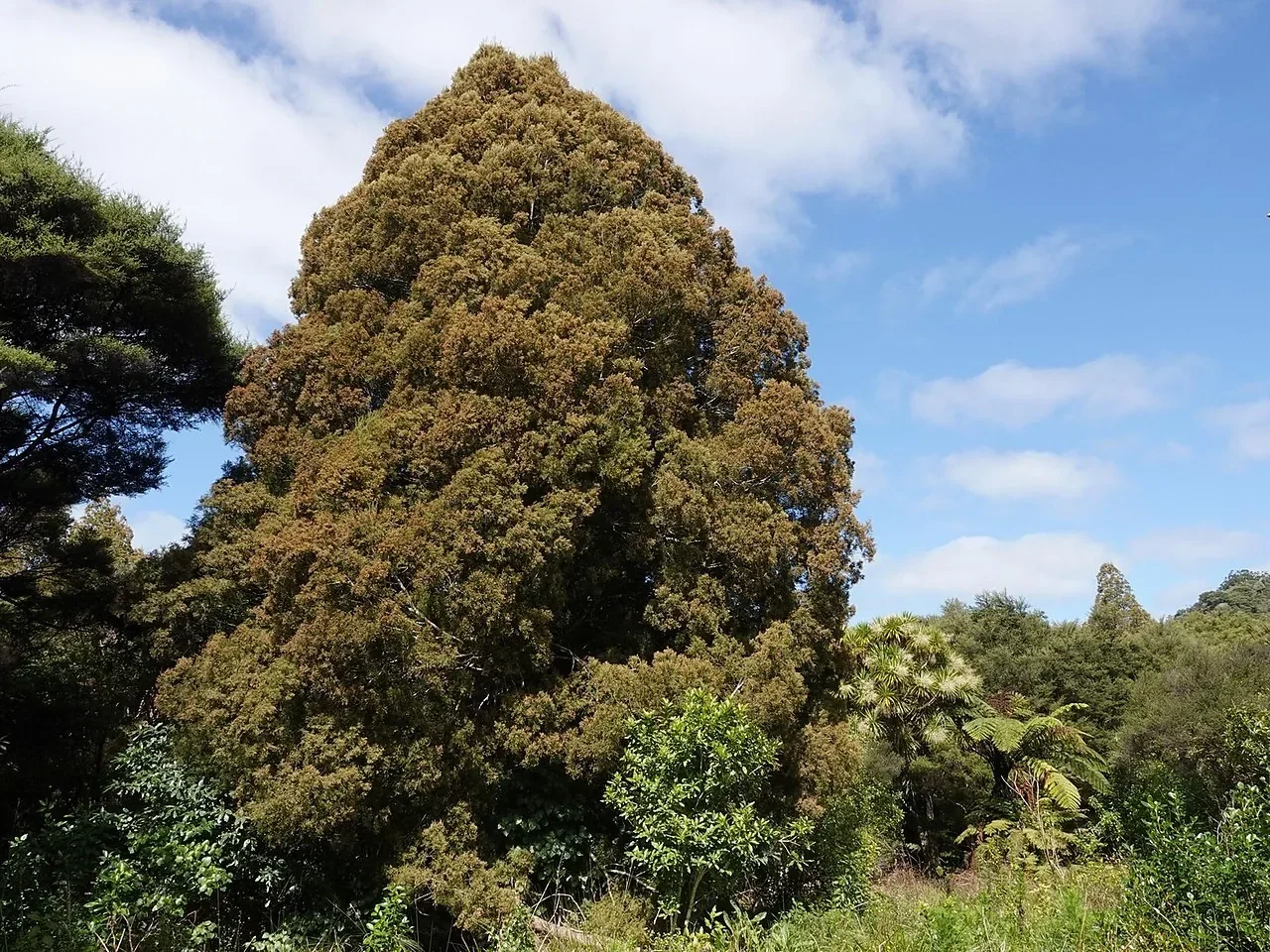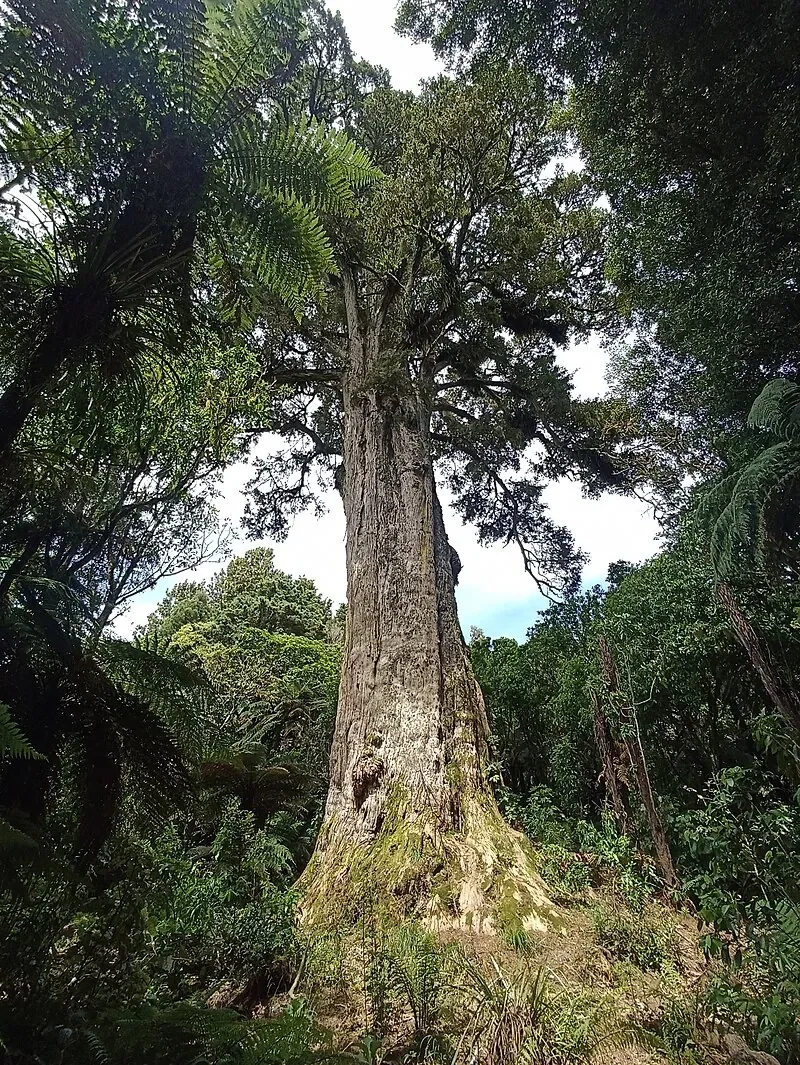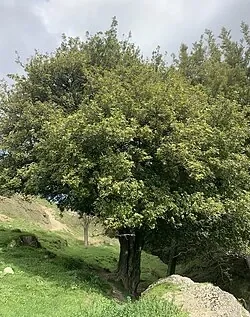
Tawa
Beilschmiedia tawa
Beilschmiedia tawaroa is a name that was once used to describe a variant of the New Zealand native tree commonly known as tawa. It is now considered a synonym for Beilschmiedia tawa. Tawa is a prominent evergreen tree endemic to New Zealand, particularly common in the lowland and lower montane forests of the North Island and northern South Island. native trees

Plant Description
Tawa can grow up to 35 meters tall with a straight, smooth, dark brown trunk that can reach 1.2 meters in diameter, often with buttressed bases in mature specimens. The leaves are narrow to broadly lanceolate, sometimes elliptic, yellow-green to green, glossy on the upper side, and have a pale, waxy underside. The flowers are small, inconspicuous, and pale green, and typically appear in axillary panicles. The fruit is a large, dark purple-black, plum-like drupe containing a single seed.
Quick Facts
| Scientific Name | Beilschmiedia tawa |
|---|---|
| Height | Up to 35m |
| Spread | Up to 10m |
| Water Needs | Moderate |
| Light | Full sun to part shade |
| Frost Tolerance | Moderate |
| Salt Tolerance | Low |
| Growth Rate | Slow |
| Lifespan | Long |
Climate Best Suited to
Tawa is particularly common in the lowland and lower montane forests of the North Island and northern South Island. It thrives in shady, moist lowland and lower montane forests, often forming pure stands or associating with podocarps like rimu. It prefers moist, well-drained, humus-rich soils.
Regional Suitability
| City | Climate Suitability |
|---|---|
| Whangārei | Ideal |
| Auckland | Ideal |
| Hamilton | Ideal |
| Tauranga | Ideal |
| Rotorua | Ideal |
| Gisborne | Ideal |
| New Plymouth | Ideal |
| Napier | Ideal |
| Whanganui | Ideal |
| Palmerston North | Ideal |
| Wellington | Ideal |
| Nelson | Ideal |
| Christchurch | Moderate |
| Dunedin | Moderate |
| Invercargill | Moderate |
Plant Habitat
Tawa thrives in shady, moist lowland and lower montane forests, often forming pure stands or associating with podocarps like rimu. It prefers moist, well-drained, humus-rich soils.
Plant Conservation
Beilschmiedia tawa is currently classified as "Least Concern" by the IUCN and "Not Threatened" in New Zealand, reflecting its stable populations and widespread distribution.
Growing Requirements
Soil Requirements
Tawa prefers moist, well-drained, humus-rich soils.
- Prefers moist, humus-rich soil
- Requires good drainage
Light Requirements
Tawa thrives in shady, moist lowland and lower montane forests.
- Prefers partial shade
- Can tolerate full sun if soil is moist
Water Requirements
Tawa prefers moist soils and will benefit from regular watering, especially during dry periods.
- Requires regular watering, especially when young
Planting Guide
Tawa is a relatively easy tree to grow from seed. The large seeds should be sown fresh in a well-drained seed-raising mix. Germination can take several months. Young plants are best planted in a shaded, sheltered position with moist, humus-rich soil.
Ecological Role
The large, plum-like fruits of the tawa are a crucial food source for native birds, especially the New Zealand pigeon (kererū), which is the primary disperser of its seeds.
Uses & Significance
Garden Uses
Tawa is an attractive specimen tree for larger gardens and parks. It is also an excellent choice for native restoration projects.
- Specimen tree
- Native restoration projects
Tawa holds significant cultural value for Māori. The kernels of its berries were an important food source, and the wood was used for various tools and implements. The tree also features in traditional stories.
- Edible kernels
- Wood used for tools and implements
Ecological Value
The fruit of the tawa is a vital food source for native birds, particularly the kererū.
- Food source for native birds
Landscaping Uses
In a landscaping context, tawa is a handsome tree that can be used as a specimen tree or as part of a mixed native planting. Its tall, straight trunk and attractive foliage make it a standout feature in any garden.
Seasonal Care Calendar
Spring
In spring, new growth will appear. This is a good time to apply a slow-release fertilizer to promote healthy growth.
- Apply slow-release fertilizer
- Monitor for new growth
Summer
During summer, regular watering is beneficial, especially during dry spells.
- Water regularly
Autumn
In autumn, the fruit will ripen and fall. This is a good time to collect seed for propagation.
- Collect seed
Winter
In winter, the tree is largely dormant. Pruning is generally not required.
- Minimal care required
When to Prune and How Much
Pruning is generally not required for tawa. However, dead or damaged branches can be removed as necessary.
- Remove dead or damaged branches as needed
Always use clean, sharp tools for pruning to minimize the risk of disease.
How to Grow Beilschmiedia tawaroa
From Seed
Tawa is easily grown from fresh seed. The large, plum-like fruits should be collected in autumn when they are ripe. Remove the flesh from the seed and sow it immediately in a well-drained seed-raising mix. The seed should be sown with the pointed end upwards and the top of the seed just below the surface of the mix. Germination can take several months, so be patient. Young plants should be planted in a shady, sheltered position and kept well-watered. Tawa is a relatively slow-growing tree, but it is long-lived and will eventually become a magnificent specimen. It is an excellent choice for a native restoration project or as a specimen tree in a large garden. It is also a good host for epiphytic plants such as orchids and ferns. When planting, ensure the soil is rich in organic matter and has good drainage. A thick layer of mulch will help to retain moisture and suppress weeds. Water the young plant regularly until it is well-established. Once established, tawa is a relatively low-maintenance tree. It is tolerant of a wide range of conditions, but it will thrive in a moist, sheltered position. It is a great tree for attracting native birds to your garden.
Pests & Diseases
Tawa is generally a pest and disease-free tree. However, it can be susceptible to attack by scale insects. These can be controlled with a horticultural oil spray.
Cultural Significance
Tawa has important mātauranga Māori associations. The kernels of its drupes were traditionally cooked in a hāngī for a long period to remove toxins and then stored as a nutritious food. The wood was used for implements, and the tree features in kōrero tuku iho (traditional narratives). Birds such as kererū rely on its fruit, intertwining cultural and ecological values.
- Nut-like kernels prepared in a hāngī and eaten
- Wood used for tools and household items
- Key mahinga kai for kererū and other manu
Bonus Tip
The kernels of the tawa berry were a very important food for Māori. They were cooked in a hangi (earth oven) for two days to remove their poison and then dried for storage.
